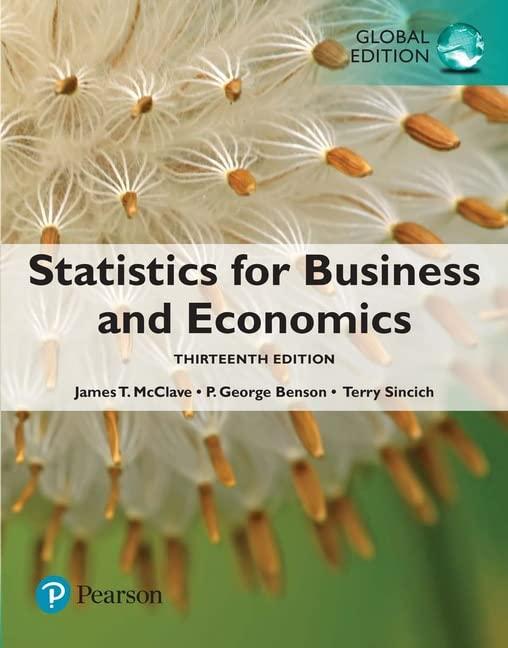Warehouse clubs are retailers that offer lower prices than traditional retailers, but they sell only to customers
Question:
Warehouse clubs are retailers that offer lower prices than traditional retailers, but they sell only to customers who have purchased memberships and often merchandise must be purchased in large quantities. A warehouse club may offer more than one type of membership, such as a regular membership R for a low annual fee and an upgraded membership U for a higher annual fee. The upgraded membership has additional benefits that might include extended shopping hours, additional discounts on certain products, or cash back on purchases.
A local warehouse club has determined that 20% of its customer base has the upgraded membership.
1. What is the probability P(U) that a randomly chosen customer entering the store has an upgraded membership?
What is the probability P(R) that a randomly chosen customer entering the store has a regular (not upgraded)
membership?
In an effort to sell more upgraded memberships, sales associates are placed at the entrance to the store to explain the benefits of the upgraded membership to customers as they enter. Suppose that in a given time period five customers enter the store.
2. Given that 20% of the store’s customers have an upgraded membership, how many of the five customers would you expect to have an upgraded membership?
3. Because there are five customers and each customer either has an upgraded membership (U) or does not (R), there are 25 = 32 different possible combinations of membership types among the five customers. List these 32 possibilities.
4. Find the probability of each of the 32 outcomes. Assume that each of the five customers’ membership type is independent of each of the other customers’ membership type and use your probabilities P(U) and P(R) with the multiplicative rule. For example, P(RRUUR) = P(R)P(R)P(U)P(R).
5. Notice that P(URRRR) = P(RURRR) = P(RRURR) = P(RRRUR) = P(RRRRU) = P(U)1P(R)4 so that P(exactly one U ) = P(URRRR) + P(RURRR) + P(RRURR) + P(RRRUR)+ P(RRRRU) = 5P(U)1P(R)4 where 5 is the number of ways that exactly one U can occur. Find P(exactly one U). Use similar reasoning to establish that P(no U’s) = 1P(U)0P(R)5, P(exactly two U’s) = 10P(U)3P(R)3, P(exactly three U’s) =10P(U)3P(R)2, P(exactly four U’s) = 5P(U)4P(R)1, and P(five U’s) = 1P(U)5P(R)0.
6. Let x be the number of upgraded memberships U in a sample of five customers. Use the results of Part 5 to write a probability distribution for the random variable x in table form. Find the mean and standard deviation of the distribution using the formulas in Section 4.2.
7. Calculate np and √npq where n = 5, p = P(U), and q = P(R). How do these numbers compare with the mean and standard deviation of the random variable x in Part 6 and to the expected number of customers with upgraded memberships in Part 1?
8. Explain how the characteristics of a binomial random variable are illustrated in this activity.
Step by Step Answer:

Statistics For Business And Economics
ISBN: 9781292227085
13th Global Edition
Authors: Terry Sincich James Mcclave, P. George Benson





